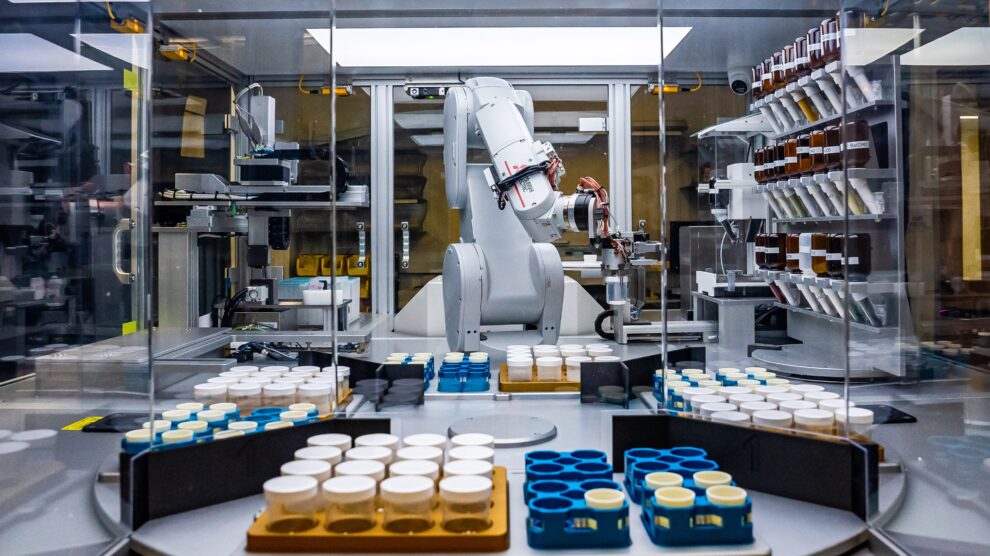Researchers from Google‘s DeepMind have used machine learning to discover 2.2 million new crystal structures, as published in the journal Nature on November 29, 2023. The new materials could have wide-ranging applications in fields like renewable energy, advanced computation, and medicine.
Applying Machine Learning to Crystalline Materials Discovery
The researchers employed an approach called “materials discovery with machine learning” to uncover the new crystal structure. This technique utilizes machine learning algorithms to detect patterns in materials data, which predict the properties of yet-undiscovered compounds.
Specifically, the team trained neural networks on a large dataset of around 250,000 experimentally known organic crystal structures. Using this knowledge, the algorithms could explore new chemical spaces and identify stable, synthesizable materials missed by existing approaches.
2.2 Million New Potential Materials Identified
Leveraging this machine learning technique, the DeepMind scientists predicted 2.2 million completely new, currently unreported organic crystal structures. This represents a 6x expansion in known chemical diversity, uncovering compounds with a range of technological applications.
We’ve used machine learning to predict 2.2 million synthesizable, stable and previously unreported organic crystal structures; a ~6× expansion in known chemical diversity. Wide scope for new functional materials. @DeepMind https://t.co/Vr6DnFgEVL pic.twitter.com/W8Eo9LHDpN
— Demis Hassabis (@demishassabis) November 29, 2022
Promising Applications in Renewable Energy, Computing & Medicine
Notably, the newly identified crystals could prove crucial for advancing renewable energy tech, next-gen computation, and novel pharmaceuticals, as per the researchers. Their atomic arrangements and electronic properties can potentially optimize solar cells, batteries, superconducting magnets, and more.
Certain predicted structures may also form high-performance semiconductors for faster, more efficient electronics and quantum computing hardware. Additionally, some compounds could yield new drug molecules or imaging agents benefiting modern medicine.
A Breakthrough for Materials Science
The sheer scale of this new crystalline chemical space and its untapped potential represents a breakthrough for materials science. Unexplored stable structures with accessible synthesis pathways can drive rapid innovation across strategic industries.
Our @DeepMind team have used Machine Learning to predict 2.2 million synthesizable, stable & previously unreported organic crystal structures – a ~6× expansion in known chemical diversity, opening many opportunities for materials innovation https://t.co/Vr6DnFgEVL pic.twitter.com/W8Eo9LHDpN
— Demis Hassabis (@demishassabis) November 29, 2022
Accelerating Materials Discovery with AI
Material science experts have highlighted machine learning’s immense potential to accelerate discovery by navigating expansive chemical spaces. Commenting on this work, IBM Fellow Dr. Nick Curtis noted it as a validation of “learned chemical intuition” now rivalling years of experiments.
Anthropic researcher Dr. Rex Remmele added that “by integrating automation on both the simulation and experiment side, rapid iterations between the two can accelerate the pace of innovation.” Essentially, combining AI predictions with robotic labs can massively boost development of advanced materials.
Elucidating Crystallization Dynamics
On a fundamental level, access to over 2 million synthesizable crystal blueprints can aid investigations into crystallization itself. As team member Prof. Demian Riccardi explained, “This work helps us understand how crystals self-assemble.” Scientists can leverage the predicted structures to elucidate crystallization mechanisms through experiments.
In turn, these insights inform strategies for controlling crystallization to obtain desired properties. This fundamental knowledge helps bridge the gap from laboratory discovery to widespread real-world applications.
The Road Ahead
The DeepMind scientists see this as just the start, with model accuracy and application scope expanding further through an autonomous AI-driven innovation loop. As lead researcher Prof. Andrew Peterson noted, “We envision this as the first step toward an autonomous discovery engine.”
By continuously retraining the model on experimentally validated data, it can rapidly refine predictions to focus on technology needs – from clean energy to quantum computing and beyond.
In many ways, this breakthrough has brought materials science to the cusp of an AI-driven revolution. It sets the stage for efficient, automated knowledge generation catering to societal priorities. Our future looks more promising than ever with advanced materials underpinning next-gen innovations.










Add Comment